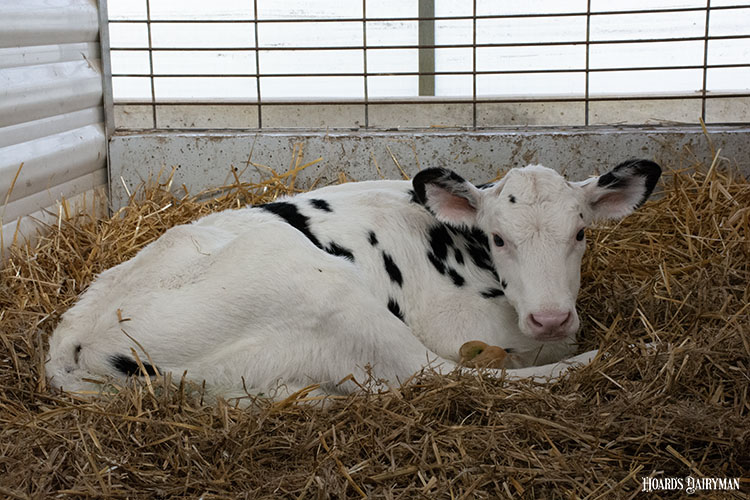
Dairy farmers, and particularly Holstein breeders, have become familiar with recessive genes and haplotype conditions in recent decades. Though they may take time to discover, they can become fairly straightforward to account for in a breeding program when there are clear phenotypes, accessible testing, and an understanding of its development.
Research is helping early onset muscle weakness, or what was previously referred to as calf recumbency, get to that point, too, but there are still many unknowns and complexities that are making the condition different from other recessives that have been discovered. For one, phenotypic expression can vary widely between affected animals.
“The main hallmark is that these calves look perfectly normal except for the fact that they just can’t stand,” described Chad Dechow on a Hoard’s Dairyman “Herd It Here” podcast. But he continued to explain that sometimes calves can’t stand up from birth, other times they may be fine for a few days and then go down, and still others may not be able to stand initially but then recover. It will manifest sometime in the first few weeks of a calf’s life. “In this case, it’s a little more varied what we get, so that makes it a little trickier,” noted the associate professor of dairy cattle genetics at Penn State, who is one of the researchers working on understanding the condition.
He was brought into the evaluation when a farm had several calves that couldn’t stand up. Having exhausted all metabolic concerns, their veterinarians came to Dechow to see if it could be a genetic issue. He explained that after extensive genotyping of the affected calves as well as their normal relatives, they found a region of two million base pairs on chromosome 16 that was mutated. However, this mutation wasn’t expressed 100% of the time in carriers.
“We had some evidence that this was not quite as simple as some other genetic recessives,” Dechow explained. Instead, the mutation expresses incomplete penetrance. He likened it to breeding a Red and White Holstein to another Red and White Holstein and only getting a Red and White calf 80% of the time.
“Basically, incomplete penetrance means you have the genetics that underlie the condition, but for some reason, not everybody expresses it,” he continued. “And we don’t know why this happens. We have looked hard, but we haven’t found evidence of another gene’s involvement at this point.”
That also contributes to why affected calves express the condition differently. Broadly, the mutation prevents calcium channels in the muscle from forming properly. Without sufficient calcium, the muscle can’t contract to allow the animal to stand up. When the mutation is expressed differently, it could affect the channels to different degrees.
Dechow shared that the prevalence of this mutation in the Holstein breed looks to be about 5%. But since a calf seems to need two copies to have the condition, only two or three calves out of every 1,000 would be homozygous, he said. And only one or two of those calves would actually express the condition in some way.
However, it is concentrated in certain cow families, so it will not affect every farm the same. To avoid it, farmers now have access to genetic testing information. “At this point, all the bull studs are testing all their bulls for this condition,” Dechow said. Not using carrier bulls is the best way to limit the spread, but if one of those bulls is desirable for other reasons, Dechow advised testing females to prevent a homozygous mating.
There is still much to be learned about early onset muscle weakness. But largely, farmers are gaining the tools to be vigilant in their mating decisions and calf care so it doesn’t become a problem in their herd, and that will help limit its damage on the industry, too.
To learn more, listen to the podcast, “What to know about early onset muscle weakness.” This episode was sponsored by Feanix Biotechnologies.








